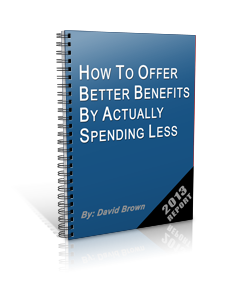
Under Obamacare, a full-time employee, with respect to any month, is an employee who provides an average of 30 hours of service per week. However, enrolling and disenrolling employees on a monthly basis would raise significant administrative issues for employers and regulators. To address these issues, the Internal Revenue Service has promulgated regulations which allow employers to use a “look-back measurement method” to determine an employee’s full-time status under the law. This Legislative Alert provides key information related to this look-back measurement method of determining full-time employees.
What is the “look-back” period as defined by PPACA?
The look-back measurement method allows the employer to select a look-back period of time to measure whether the employee worked an average of 30 hours per week. If the employee worked an average of 30 hours per week during the look-back period, the employer must consider the employee a full-time employee during the subsequent “stability period”, regardless of the number of hours the employee works during the stability period.
How do I calculate the look-back period?
Calculation of the look-back period depends on whether the employee is
- ongoing employee, or
- new variable hour employee or seasonal employee.
Ongoing employees:
For an ongoing employee, an employer may determine full-time status by using a look-back period of between three and 12 months. Under the rules, the employer is given discretion to choose the length of the look-back measurement period provided it conforms with the length of time rules discussed above and that the determination is made on a uniform and consistent basis for all employees in the same category.
New variable hour employees and seasonal employees:
An applicable large employer may also use a look-back measurement period for new variable hour employees and for seasonal employees in certain circumstances. A new employee is a variable hour employee if, based on the circumstances at the employee’s start date, it cannot be determined that the employee is reasonably expected to work on average at least 30 hours per week. Through at least 2014, employers may use a reasonable, good faith interpretation of the term “seasonal employee.” For new variable hour and seasonal employees, an employer may use a “look-back period” of between three and 12 months that begins on any date between the employee’s start date and the first day of the first month following the start date.
Do I have to use a consecutive period of time?
Yes. The look-back period must use a consecutive period of time.
What is the “stability period” as defined by PPACA?
The stability period begins immediately after the look-back period and any administrative period. Calculation of the stability period depends on the type of employee and whether he or she is determined to be a full-time employee during the look-back period.
How do I calculate the stability period?
Ongoing employees:
If an employer determines that an ongoing employee worked full-time during the look-back period, then the stability period must be at least the greater of six consecutive calendar months or the length of the look-back period. If the employer determines that the ongoing employee was not a full-time employee during the look-back period, then the stability period must be no longer than the look-back period.
New variable hour and seasonal employees:
If a new variable hour or seasonal employee is determined to be a full-time employee, then the stability period must be the same as that for ongoing employees – either six consecutive calendar months or the length of the look-back period, whichever is longer. If a new variable hour or seasonal employee is determined not to be a full-time employee during the look-back period, then the stability period may be, at a maximum, one month longer than the look-back period. However, the stability period may not exceed the remainder of the employer’s look-back period for ongoing employees (plus any associated administrative period).
What is the “administrative period” as defined by PPACA?
Employers may impose an administrative period that begins immediately after the end of the look-back period and ends immediately before the stability period. The purpose of this “administrative period”, which may last up to 90 days, is to give employers time to determine employee eligibility for coverage, notify them of their eligibility, and enroll them in the plan.
How do I calculate the administrative period?
The administrative period may last up to 90 days. However, this administrative period cannot create a gap in coverage for ongoing employees who are enrolled in coverage because of full-time employee status. For new variable hour employees and seasonal employees, the look-back period and administrative period combined may not extend past the last day of the first calendar month beginning on or after the one-year anniversary of the employee’s start date.
Can I use different look-back periods, stability periods, or administrative periods for different categories of employees?
Yes. According to the proposed rule on the employer mandate, an employer may select different look-back periods, administrative periods, and stability periods for certain categories of employees. For example, the proposed rule states that an employer may select different periods for:
Each group of collectively bargained employees covered by a separate collective bargaining agreement,
- Collectively bargained and non-collectively bargained employees,
- Salaried employees and hourly employees, and
- Employees whose primary places of employment are in different states.



